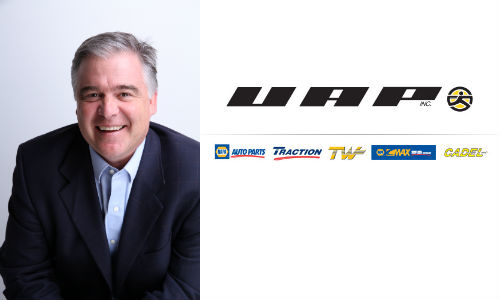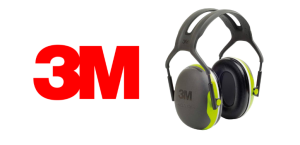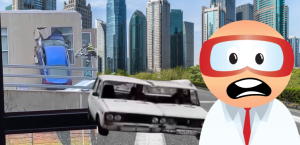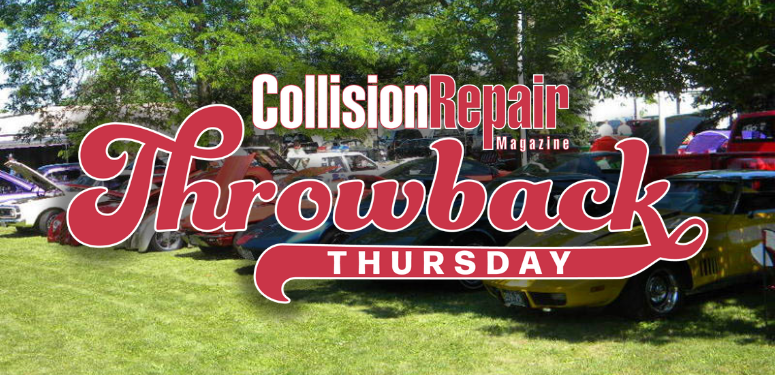Montreal, Quebec — May 22, 2017 — Eric Léveillé is the Vice President, Paint and Body Equipment, for UAP, the parent company of the NAPA and CMAX chains of stores. He joined UAP in September 2015. His experience in the industry stretches back at least 20 years to when he was employed by 3M as a District Sales Manager for the company’s automotive aftermarket division. Léveillé holds a degree in marketing from Université de Montréal’s business school, HEC Montréal.
Collision Repair magazine: What do you view as the three most critical challenges for individual shops?
Eric Léveillé: The first is the workforce; attracting and retaining highly skilled staff. Many shops struggle with this, and it’s been an ongoing issue for many years. The second challenge is that of advancing technology. Again, this is not really new, but it is still an issue that shops have to stay on top of. Falling behind on the technology front probably means collision repair shops will have to play catch-up and find alternative revenue sources due to a reduced workload. Third, I would have to say consolidation at all levels, not just shops. We’ve seen more consolidation among distributors and I expect to see even more in the future.
The recent news about PPG trying to acquire part of AkzoNobel indicates there may be more consolidation coming in coatings suppliers as well. I think we can also expect a similar consolidation with the insurers.
CRM: What would you suggest to a shop owner who is trying to deal with the workforce challenge?
EL: We need to make the industry attractive and appealing for the millennial generation who are tech savvy. We need to put more programs in place to attract students to trade schools, and make sure they’re being trained to repair cars in the new environment. With all the new aluminum trends, and all the high-strength steel we’re seeing, it’s essential that new technicians are being trained to deal with these materials. This is vital so that when they get into the shop they can actually use the equipment. The
shop owner’s responsibility is to make sure those new technicians have good mentoring and some sort of job shadowing, so they are involved in the repair process from their first day. Not just sweeping or cleaning, but really involved in the repair process from the start.
CRM: In your view, what are the most important steps for a shop to take to secure longevity?
EL: Frankly I think this comes down to workforce again. It’s essential that a shop has the right people in key positions. Investing in the future means investing in your people and your business and making sure you’re on top of technology trends. There’s also the certification piece. Having OEM certifications is going to become more important, but it starts with training your people and making sure they have the right equipment and skills. Take, for example, the new construction of the Audi Q8 with lighter aluminum components to make the vehicle lighter, fuel efficient and sustainable. Other car makers are following this trend.
CRM: What do you think will be an area of growth for collision repair facilities?
EL: Right now, I would take a look at both glass and mechanical services, and broaden the scope of business beyond the traditional
DRP. Offering mechanical services means the shop can do more in-house and have fewer subcontractors. Glass is similar, in that bringing it in-house cuts down on outsourcing. I would even take a look at offering tire changes. That could be an additional profit centre. There are a lot of similar ways where shops could leverage the skilled technicians they already have, such as paint protection film that combines with window film, and offers great synergy. I would also look at adjacent markets, such as refinishing components for other industries. Electrical transformers, containers and other industrial items need finishing work. This could be provided by a collision repair centre without a lot of additional investment.
CRM: Thinking solely of how it’s going to change the business, what’s the biggest change we can expect in the next few years?
The type of change is wide open. It can be technological change, social change, etc.
EL: I think both autonomous vehicles and increasing numbers of electric vehicles are going to be the biggest changes we can expect. The technical aspects of how these cars are built will be a major change. Tesla’s construction, for example, is unique to Tesla and repairing them requires specialized skills. It’s almost getting to the point where you need to be an engineer to repair a car. Regarding autonomous vehicles, those repairs are going to have to be absolutely flawless. You’ve got no one behind the wheel, and the computer needs the car to function exactly as it should have when it left the factory.
CRM: What does the future hold for NAPA Canada and CMAX? Can you give us any hints about what we might see in the near future?
EL: The future is really bright. Our staff is highly trained and we have great relationships with key suppliers such as Axalta. We’ve been growing our footprint over the last few years and we have no intention of stopping, especially in the light of the consolidation that is happening in the market as I mentioned earlier. In the past year alone, we’ve opened five new CMAX stores. This gives us 52 CMAX locations across Canada. It’s a fun time to be working at UAP. We’re all very excited about the coming years. Changes in the industry are bringing a new kind of excitement.





































